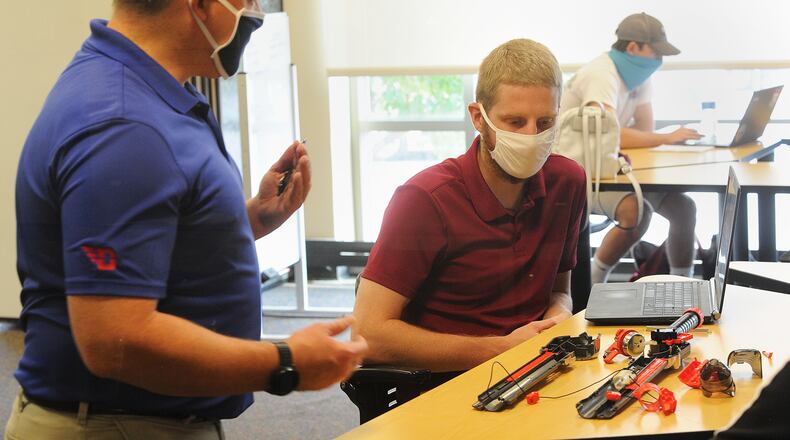“We are definitely happy to have the students back,” Phelps said.
The university had planned to return to in-person learning in August. Then a sudden outbreak of coronavirus cases days before classes were to begin led UD President Eric Spina to suspend face-to-face learning for two weeks. Instead, all classes were held remotely until this week.
The outbreak likely happened because some students violated the university’s safety protocol by having large gatherings, not wearing masks and failing to practice physical distancing, officials have said. About a dozen students who violated the safety protocols were banned from campus ― not suspended ― and will complete all of the courses remotely for the remainder of the semester.
Several hundred more students have been sanctioned or face sanctions, depending on the outcome of their cases. Those sanctions will vary and could include suspension, the university said.
School officials also implemented a system in which they said they’d randomly test up to 1,000 students per week. Daily cases peaked at 167 in late August.
The outbreak at the institution elevated Montgomery County to having one of the highest number of COVID-19 cases per capita among all Ohio counties. That prompted Jeffrey A. Cooper, who heads Public Health-Dayton and Montgomery County, to write an open letter to students on Sept. 4. In the letter, he called the university’s coronavirus outbreak “a major threat to the public’s health and the well-being of our citizens.”
The number of cases on campus then plunged and remained mostly in single digits since. On Wednesday, the university reported six new cases, up from three the previous day. Phelps credits the students for the turnaround.
“I’ve got to say, our students have done a great job, saying, ‘OK, we need to really take this seriously, wear the mask, six feet apart, no large gatherings,'" she said. “They’ve done a great job, and it shows (because) the number of cases we now have are much fewer.”
Students Hayden DiPalma, a senior in entrepreneurship, and Caroline Gosswein, a junior in finance, said they were excited to be having in-person classes. The cousins, who are from New York and Chicago, respectively, said they’ve been itching to be in the classroom with their friends and professors, and walking around campus.
“It feels awesome to be back,” Gosswein said. “It’s a lot better to learn from our professors and ask questions in person than it is over Zoom.”
Joel Pruce, an assistant professor of human rights studies, is a member of the group UD Solidarity, which has been pushing the university to put more measures in place before resuming in-person instruction. Face-to-face instruction now is unacceptable, particularly since UD isn’t testing employees and that the number of students being randomly tested has dropped, he said.
“The virus has so far spread through over 10% of our students, and senior leadership has proven incapable of protecting the health of the UD community," Pruce said. "Reopening classes risks further spikes and community spread just at the time when we seem to have gotten this problem under control.”
The university has frequently communicated with employees that they can be tested at a site of their choosing with a referral from their physician, or they can obtain a test at the Premier Health testing site located across from Miami Valley Hospital with an order from a health care provider or visit local urgent care locations, school officials said. UD has focused on identifying and mitigating the spike among undergraduates, school officials said.
At its peak, UD tested several hundred students per week who had symptoms, requested tests or were part of the random sample, officials said in a statement. This week, the school plans to test up to 225 randomly selected students, in addition to targeted and on-demand testing.
About the Author

